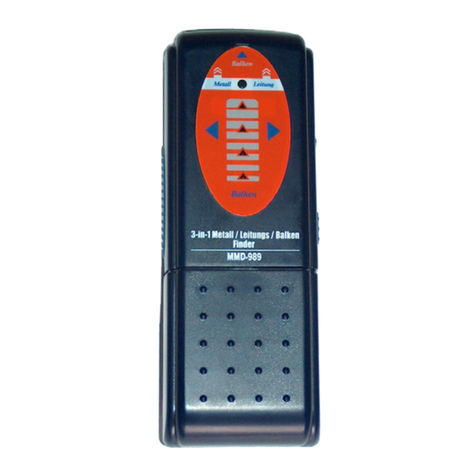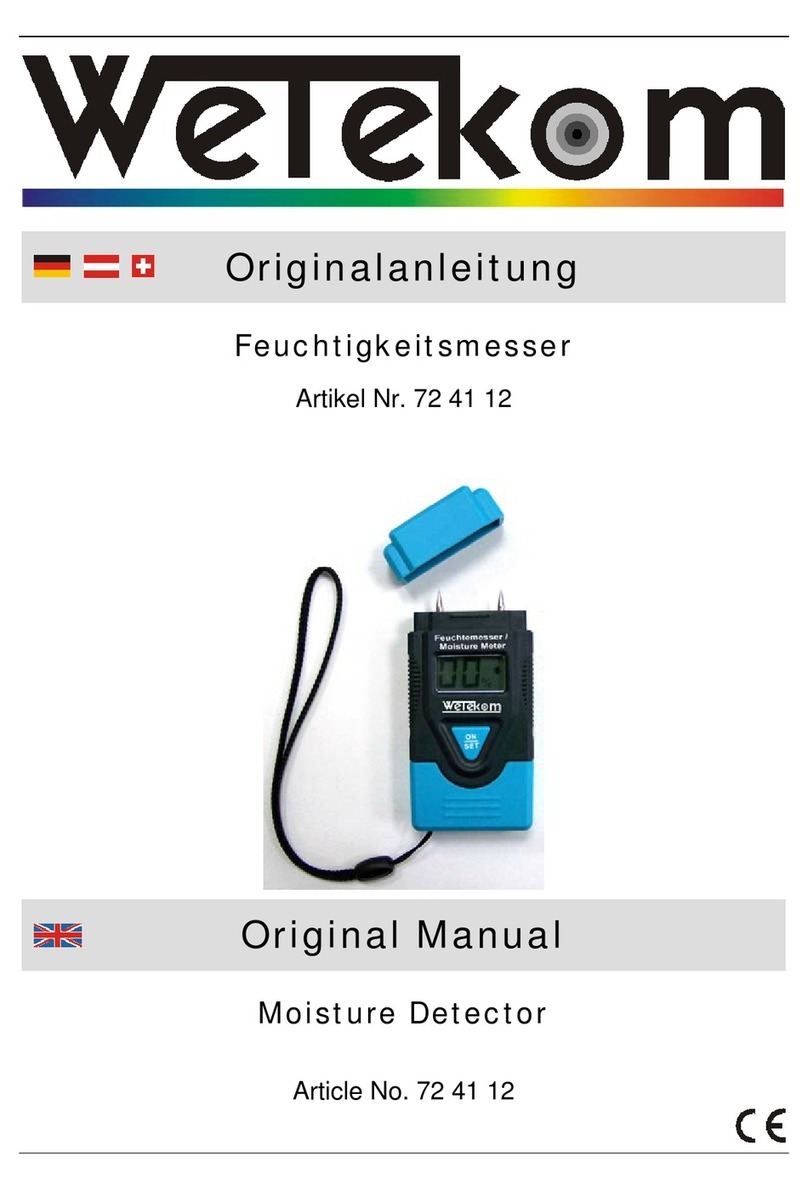
VII
Bedienun
einen Signalton. Falls dies nicht der Fall ist, korrigieren Sie die
Empfindlichkeit und/oder kontrollieren Sie die Batterien.
4. Führen Sie dann die Messspitze (1) an das Testobjekt heran
oder stecken Sie die Spitze in einen Steckdosenpol bzw. fahren
Sie an einem Netzkabel entlang. Erfolgt dabei keine Signalisie-
rung (auch bei hoch eingestellter Empfindlichkeit) oder setzt das
Signal an einer bestimmten Stelle aus, ist die getestete Netzlei-
tung dort unterbrochen. So können Sie auch unter Putz verlegte
Leitungen verfolgen.
5. Drehen Sie den Empfindlichkeitsregler (2) über den Widerstand
hinaus in Richtung Plussymbol, um das Gerät auszuschalten.
Hinweis: Beachten Sie, dass trotz Ausbleiben der Anzeige noch
immer Spannung vorhanden sein kann. Durch Unterschiede der
Bauart der Anschlussbuchse oder der Art der Isolierung (Dicke und
Typ) kann die Funktionalität beeinflusst werden. Hinter Paneelen
und metallischen Abdeckungen kann keine Spannung erkannt
werden.
Reinigung und Lagerung
Verwenden Sie zum Reinigen des Gehäuses nur ein weiches,
trockenes oder leicht befeuchtetes Tuch. Verwenden Sie keine
aggressiven Chemikalien, Scheuermittel oder Flüssigkeiten.
Entfernen Sie die Batterien aus dem Gerät, wenn Sie es für
längere Zeit nicht einsetzen werden.
Lagern Sie das Gerät im Innenbereich an einem vor Feuchtigkeit,
Staub, Schmutz und extremen Temperaturen geschützten Ort.
Lagern Sie das Gerät außerhalb der Reichweite von Kindern.
Batterien und Akkus gehören nicht in
den Hausmüll.
Sie können sie kostenlos an uns zurück-
senden oder bei örtlichen Geschäften oder
Batteriesammelstellen abgeben.































